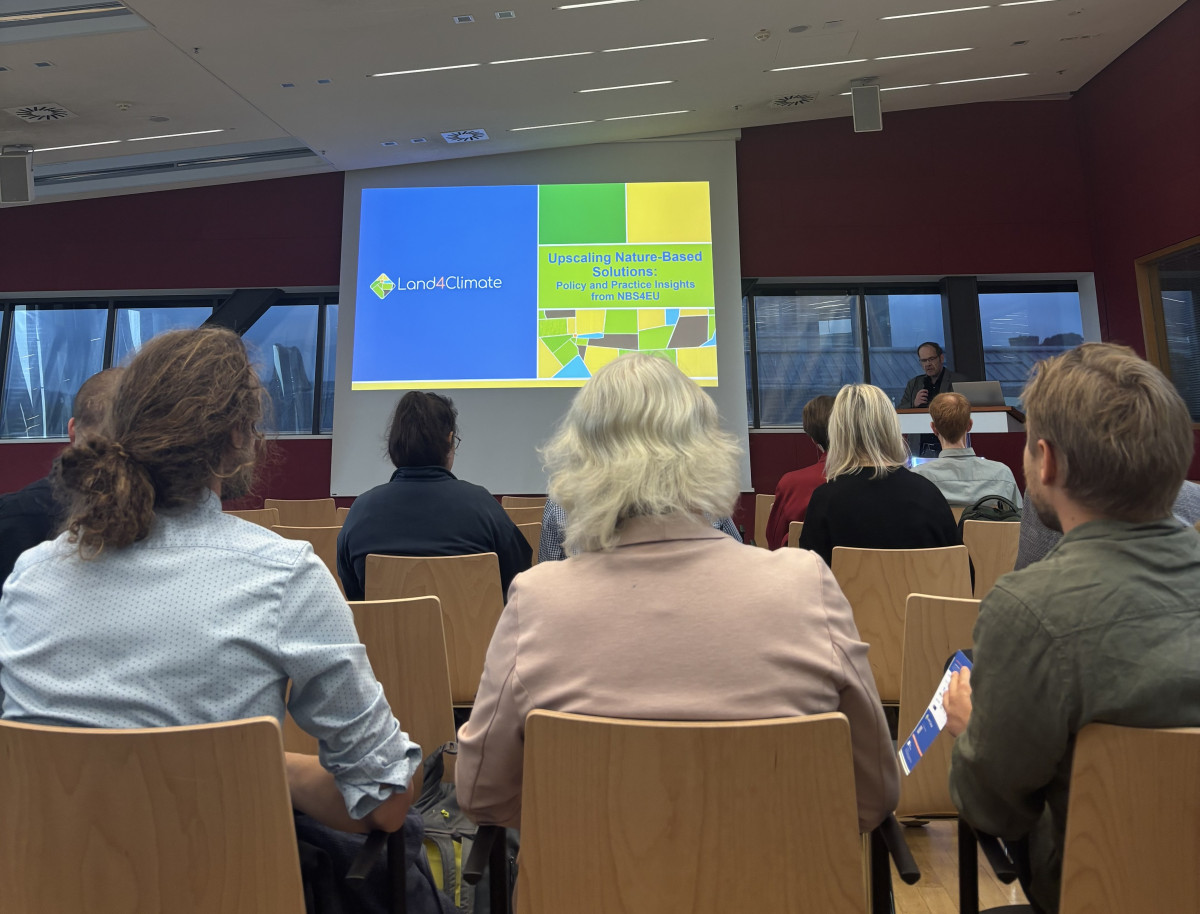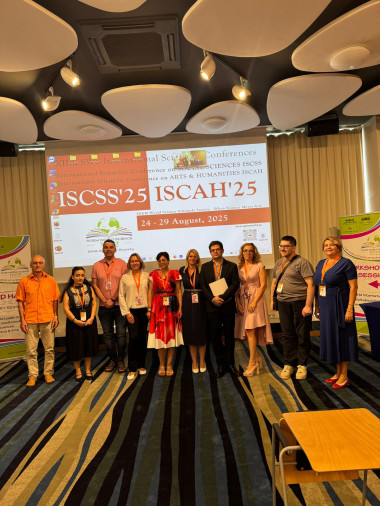LAND4CLIMATE: Natural resilience resonating across Europe
Published: Oct 24, 2025 Reading time: 3 minutes Share: Share an articleIn October, the German city of Aachen became a centre of debate on the future of nature-based solutions (NBS). Dozens of experts, scientists, representatives of municipalities and projects from across Europe gathered at the LAND4CLIMATE Mid-term Forum, hosted by RWTH Aachen University. We sought answers to the question of how to bring NBS into mainstream policy and practice—and our partners in EUKI ELCA were there.

The atmosphere was lively, interactive, and full of exchange. The forum took place within the NBS4EU Cluster initiative, which connects seven projects under the Horizon Europe programme. The opening keynote was delivered by Professor Erik Andersson from the University of Helsinki. He noted that success lies in cooperation with multiple actors—from scientists and urban planners to residents. “Multi-stakeholder partnerships are at the heart of success, yet we still lack strong involvement from the private sector. NBS prove effective where they become a shared endeavour—not just a technical measure, but a space for shared values.”
He emphasised that in recent years, Europe has made significant investments in urban NBS, positioning itself as a global leader in this field. At the same time, however, he noted certain blind spots: most urban projects focus on new or redesigned spaces, while the protection and restoration of existing ecosystems is overlooked. Moreover, according to h Professor Andersson, technological and institutional gaps undermine the long-term sustainability and scalability of projects.
From Policy to Practice: Four Thematic Blocks
After the morning session, four parallel sessions followed, each addressing key questions related to the implementation of NBS:
- Evidence Base and Scalability of NBS – How can the impacts of nature-based solutions be measured? The discussion showed that without high-quality data and long-term monitoring, it will be difficult to convince decision-makers of their benefits.
- Spatial Requirements of NBS – What are the spatial demands of NBS? How can we balance land protection, urbanisation, and agriculture?
- Funding Strategies and Policy Frameworks – How can NBS be financed and embedded in political strategies? Participants agreed that long-term financing requires a combination of public and private resources.
- Implementation Challenges and How to Overcome Them – What prevents the broader uptake of NBS? Barriers range from legislative obstacles to a lack of local capacity and shared know-how.
The final panel, From Projects to EU Cohesion Policy, emphasised that EU cohesion and structural funds need to better reflect NBS—only then can pilot initiatives evolve into systemic tools for regional development.
The Czech Experience: Recovery After a Tornado and Flash Floods as an Opportunity
The Czech EUKI ELCA team contributed to discussions for example with insights from Moravská Nová Ves—a municipality struck by a tornado in 2021. In cooperation with the local government, People in Need developed a climate action plan that uses nature-based measures as tools for both recovery and prevention of future risks, and which the municipality is now beginning to implement.
“After the disaster, we didn’t want to simply rebuild what was destroyed—we wanted to create something more resilient,” said Jiří Fila, Deputy Mayor of Moravská Nová Ves, who attended the forum. The project demonstrates that combining biodiversity, community engagement, and impact assessment turns NBS into not only an environmental but also a social innovation.
Roman Klecker from the Hodonín office of People in Need discussed specific NBS flood prevention projects as well as the challenges faced during implementation in Dolní Bojanovice. The topic drew considerable interest, leading to lively exchanges and brainstorming of possible approaches to tackle these issues.
The conference in Aachen clearly demonstrated that nature-based solutions are not a passing trend but a key pillar of climate protection. They bring together science, innovation, and the human dimension—proving that the future of Europe’s cities and regions can be built with nature, not against it.



